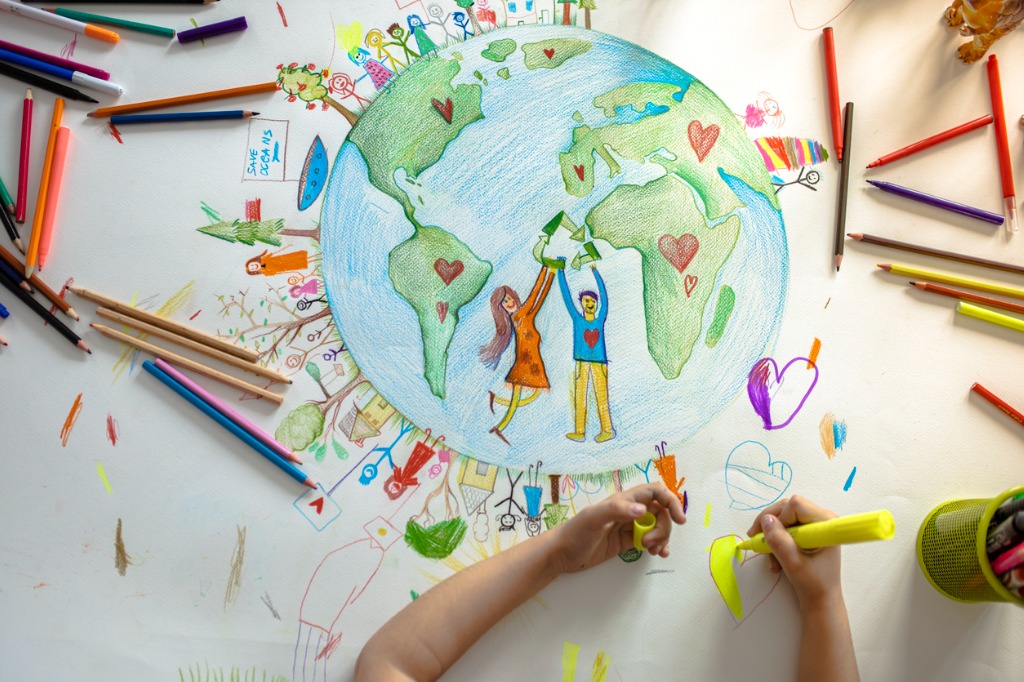11 Dec 2024

Tired Earth
By The Editorial Board

In 2021, many people across Canada experienced the impacts of weather-related events linked to climate change, including devastating flooding, landslides, heat domes, wildfires, thawing permafrost and hurricanes.
While the effects of climate change are undeniable across global communities, these effects also disproportionately impact people who experience social, structural and systemic inequities and marginalisation.
Research findings have identified the importance of moving beyond traditional curricular approaches in schools.
Climate change is a social and intergenerational justice issue that disproportionately impacts children and youth, who have have inherited the problem.
Youth and children also have unique needs in climate adaptation, mitigation and recovery processes, given the effects climate disasters can have on their lives.
Children also want to be actively and meaningfully engaged in responses to climate change, but are often not given the opportunity — and when they do act, their efforts can go unnoticed.
When young people perceive that adults are not taking substantial action on climate change and when their voices go unheard, these experiences can contribute to youth losing hope for their futures.
This is particularly the case in a media-saturated world where reminders of climate disasters, as well as misinformation, are permeating the news, social media and the social environment around them.
The impacts of climate change, as well as youth and children's reaction to them, serve as continuous reminders for educators, parents or guardians, regional planners and health providers that climate change is an urgent issue requiring immediate attention.
How we communicate about climate change and imagine possible social responses to this shared crisis has a lasting effect on children and youth today.
The impacts of climate change, as well as youth and children's reaction to them, serve as continuous reminders for educators, parents or guardians, regional planners and health providers that climate change is an urgent issue requiring immediate attention.
How we communicate about climate change and imagine possible social responses to this shared crisis has a lasting effect on children and youth today.
For their development and well-being, children need information that both acknowledges the very troubling realities we are facing but also equips them to take action to change that future.
Building on the thinking of psychologist Lee Daniel Kravetz, this could be called offering “grounded hope” — a way of seeing based in a realistic understanding of circumstances, while cultivating hope by building confidence in our ability to have a role in shaping outcomes.
With respect to climate change, this approach would encourage young people to learn how to identify and connect with the strengths and assets of their communities and to develop tools for envisioning and building sustainable solutions.
For children and youth, art is not only a powerful and accessible way to communicate about how climate change is affecting their lives and sense of future, but also a creative way to develop new metaphors, narratives and design principles for building a more hopeful future.
Youth have varied reactions to the effects of the climate crisis on their future.
These reactions include having stress or anxiety-related responses that negatively affect sleep, ability to focus and relationships; feeling like the future is out of their hands, leading to reduced priority of planning for the future (such as considering further education) or expressing commitments to taking action to address climate change.
Educators play an important role in helping youth and children manage their stress about the future and stay connected to each other in a kind and compassionate way. Paying attention to both is critical when the going gets tough.
Beyond stress, some children and youth find the effects of climate change are traumatic.
The Manitoba Trauma Information Centre defines trauma as “a single experience, or enduring repeated or multiple experiences, that completely overwhelm the individual's ability to cope or integrate the ideas and emotions involved in that experience.” Research shows that when talking to young people about climate change, a trauma-informed practice that builds resilience is helpful.
A B.C. Ministry of Education document offering key principles and strategies promoting mental health in schools notes that taking a trauma-informed lens means “integrating an understanding of past and current experiences of trauma into all aspects of school life.” From curriculum guidelines to teaching approaches, schools must seek to operate out of an awareness of the historically and culturally specific ways that students are vulnerable to both climate trauma and other forms of trauma resulting from intersecting forms of injustice and marginalization.
The COVID-19 pandemic has highlighted the ways in which severe and sustained changes to children's social world via, prolonged periods of social distancing and school closures, for example, may alter children's development, prospects for educational attainment and life chances — chances people have for “sharing in the socially created economic or cultural ‘goods' … in any given society,” as explained by sociologist Anthony Giddens.
Extreme-weather events create the possibility for similar personal and social upheaval, along with significant impacts to the natural environment, communities and built infrastructure.
However, involving children meaningfully (in age- and stage-appropriate ways) in making change can promote feelings of agency and resilience in the age of the climate crisis.
We look forward to continuing to understand specific ways educators, parents and role models are teaching about climate change in resilience-building ways, and what insights this may yield for future directions for climate change education.
By Maya K Gislason, Assistant Professor, Faculty of Health Sciences, Simon Fraser University and Angel M Kennedy, PhD Student, Faculty of Health Sciences, Simon Fraser University
The Conversation
Source : tribuneindia.com
Comment